Olive Oil Poached Albacore Tuna with Corona Bean Salad
Poaching is always a gentle method for cooking meat, fish and fowl. It’s always at a mild simmer. Always? Not with this method.
When I read the method of Chef Jenn Louis, chef and co-owner of Lincoln Restaurant in Portland, for Olive Oil Poached Albacore in the FOODday section of The Oregonian, I knew I would be preparing it ASAP. The tuna loin is sliced and sits atop sliced citrus, fresh thyme and then covered in olive oil. Chef Louis used lemon; I chose grapefruit. Why? Why not?
Slow poaching in a warmed liquid produces an end product with a soft texture that’s difficult to obtain using a higher, searing-heat method, plus you have the benefit of the flavorful olive oil and whatever aromatics you add. The tuna is gently coaxed up to the desired internal temperature of 125 °F, yielding a delicately cooked piece of fish. (It is wise to educate yourself on food safety and recommended internal temperatures of all animal foods when doing marginal cooking such as this, which is similar to the sous-vide method of cooking food sealed in vacuum bags in water baths at moderate predetermined temperatures.)
Olive Oil Poached Albacore with Corona Bean, Tomato and Olive Salad
Inspired by a recipe in The Oregonian
Although not as elaborate, this dish captures the essence of a Niçoise salad, and you could certainly push it in that direction with the addition of some lightly steamed vegetables, boiled egg and perhaps some anchovy. It makes a perfect lunch or light dinner entrée and would pair nicely with a light-colored, dry rosé or pinot noir from Soter Vineyards or Patton Valley Vineyards.
I stumbled across dried corona beans at one of my local wine merchants, Santiam Wine Company. Owner Debbie Rios convinced me to try them and I’m so grateful she did. These giant cousins of lima beans make a striking visual statement both in the dried state and after re-hydrating and simmering to perfection.
Serves 4
For the corona bean, tomato and olive salad:
- ¾ pound (340 gr.) dried corona beans
- 1 quart (1 lt.) chicken stock
- 1 tablespoon (15 ml.) herbes de Provençe
- 1 large fresh tomato, diced
- 8 ounces (240 ml.) chopped mixed olives such as Kalamata, a Greek mix and black cerignolas from the olive bar at your local grocer
- ½ cup (120 ml.) chopped red onion
- 2 tablespoons (30 ml.) pickled sweet pepper, chopped (my source offered Peppadew, the brand name of a sweet, piquanté pepper)
- 2 teaspoons (10 ml.) winter savory, finely chopped or substitute regular savory or thyme
- 3 tablespoons (45 ml.) olive oil
- 1 tablespoon (15 ml.) red wine vinegar or more to taste
- Salt and fresh ground pepper to taste
- Begin a day ahead by soaking the beans in fresh water overnight.
- Bring the beans, stock and herbes de Provençe to a boil, add a large pinch of salt then lower the heat and simmer for 45-60 minutes or until the beans are cooked to your liking. I like them lightly al dente on the exterior and smooth in the centers.
- While the beans are cooking, mix together the tomatoes, olives, sweet pepper and herbs.
- When the beans are finished cooking, drain and rinse. Add the beans to the rest of the mixture and dress with the olive oil, vinegar, salt and pepper.
For the olive oil poached albacore:
- 1 pound (455 gr.) tenderloin of albacore, cut into ⅓ to ½-inch (.8 to 1.25 cm.) slices
- 1 ruby red grapefruit, preferably organic, sliced
- 3-4 sprigs of fresh thyme
- 3 cloves of garlic, halved lengthwise
- 1 liter extra virgin olive oil*
* I’ll bet your heart stopped when you saw 1 liter. I realize this is an investment, and here are some suggestions for making the most of it. Look for bargain extra virgin olive oil at places such as Trader Joe’s, Cost Plus World Market or at Tuesday Morning, as I did. When finished cooking with the oil, let it cool to room temperature, then strain back into the bottle and store in the refrigerator for another poaching dish. To be on the safe side, when reusing, heat the oil to 140 °F (60 °C) to kill any possible bacteria. (Salmonella dies at 130 °F or 54 °C.)
- Line the bottom of a heavy sauté pan large enough to hold all the slices of albacore, with the sliced grapefruit.
- Add the halved garlic cloves and thyme and lastly the sliced albacore.
- Add enough olive oil to cover all, bring to 130 °F (54 °C), remove from heat and allow to cool to room temperature. You can remove the fish when the internal temperature reaches 125 °F, or 52 °C.
- Serve over the corona bean salad and garnish with fresh parsley and a sprig of winter savory.
Bon appétit
— Charles
Category: Seafood
About the Author (Author Profile)
Music, food and photography are at the center of Charles’ life. He performed with the Dallas Symphony, Dallas Opera and was assistant principal bassoonist with the Fort Worth Symphony for more than 20 years. When Charles and Victor moved to Baltimore, Charles created Lone Star Personal Chef and Catering Service and taught cooking classes at Williams-Sonoma. Now in Salem, Charles is a Realtor with Coldwell Banker Mountain West Real Estate, taught cooking classes for children at the A.C. Gilbert Discovery Village, and owns and operates Charles Price Photography. Charles and Vic enjoy entertaining and frequently host dinners as fundraisers for local non-profits and charities






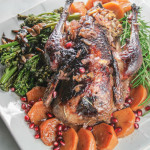

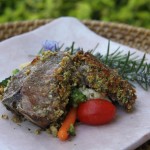

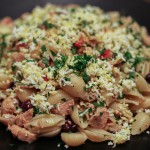

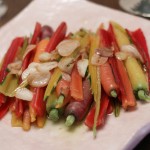
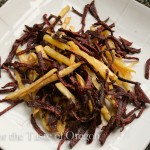


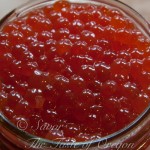
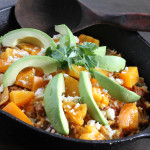
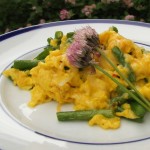
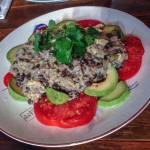
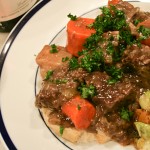
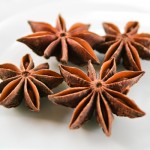



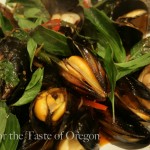


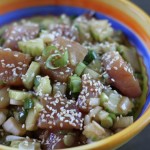
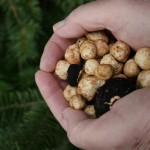
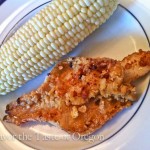


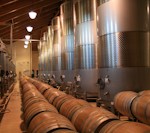
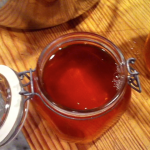





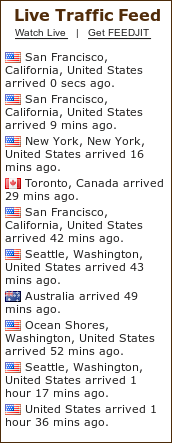





Comments (0)
Trackback URL | Comments RSS Feed
There are no comments yet. Why not be the first to speak your mind.